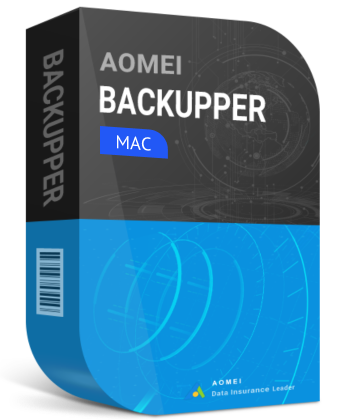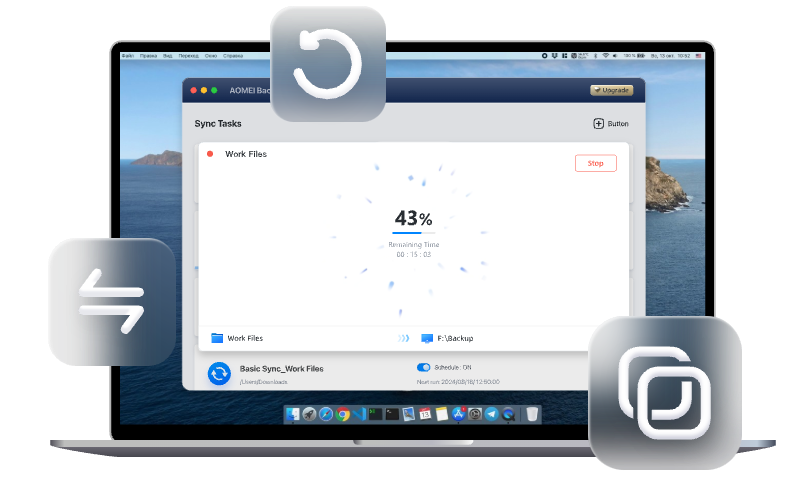Resolving "Transfer Information to This Mac Looking for Source" Issues
This article provides a comprehensive guide on how to resolve the "transfer information to this Mac looking for source" error. It covers multiple solutions, detailed steps, and answers to frequently asked questions. The article also offers practical tips for successful data migration.
Migration Assistant stuck on "Looking for other sources..."
“I just bought a new iMac today and I am trying to use Migration Assistant to move all my info on my Mac Pro to my new machine. The problem is that the Migration Assistant is getting stuck at the "Looking for source" step, trying to find my old Mac with no success.”
– Apple Forum
What is the Migration Assistant
Migration Assistant is a built-in utility on macOS that helps users transfer data from one Mac to another or from a Windows PC to a Mac. It simplifies the process of moving user accounts, settings, apps, documents, and other files to a new computer, ensuring a seamless transition.
It operates on any Mac running OS X El Capitan or later versions of macOS. The key requirement is that both computers must be connected to the same Wi-Fi network. Transferring data to a new Mac is typically a straightforward process, facilitated by Apple's Migration Assistant. However, encountering the "transfer information to this Mac looking for source" error can be frustrating and time-consuming. This guide will help you navigate and resolve this issue, ensuring a seamless migration of your data.
Understanding the "Transfer Information to This Mac Looking for Source"
What Causes This Error?
⚡Network Issues: The most common cause of this error is an unstable or improperly configured network connection. Both Macs must be connected to the same network for the transfer to occur smoothly.
⚡Incorrect Settings: If the settings on either Mac are not configured correctly for the migration process, it can lead to an error.
⚡Outdated Software: Running different or outdated versions of macOS on the source and destination Macs can cause compatibility issues during the transfer.
⚡Hardware Problems: Faulty cables or hardware components can disrupt the transfer process, leading to errors.
⚡System Glitches: Occasionally, system bugs or glitches in macOS can interfere with the Migration Assistant, resulting in the error.
Why Is It Important to Address This Issue?
- Data Integrity: Ensuring a successful data transfer is crucial to maintaining the integrity and completeness of your files, settings, and applications.
- Seamless Transition: Fixing this issue allows for a smooth and hassle-free transition from an old Mac to a new one, saving time and reducing frustration.
- System Performance: Properly addressing and resolving this error can help avoid potential performance issues that may arise from incomplete or corrupted data transfers.
- User Experience: A successful data migration enhances the overall user experience by ensuring all necessary data is accessible and operational on the new Mac.
Fix Transfer Information to This Mac Looking for Source
Migration Assistant getting stuck on a Mac is a common issue that arises when transferring data from an old computer to a new Mac. Users often find themselves waiting for hours, only to discover that Migration Assistant is stuck at various stages—starting up, searching for applications and documents, or looking for other sources.
If Migration Assistant freezes early on, it's likely because your new Mac can't locate the source Mac or Windows PC, and therefore doesn't know where to read the files from. To address this, ensure the Firewall on the old Mac is disabled. You can do this by navigating to the Apple menu > System Preferences > Privacy > Firewall. If the Firewall is on, turn it off.
Once the old Mac has Migration Assistant open and set to transfer to another Mac, you can follow the troubleshooting steps below to resolve the issue of Migration Assistant being stuck on your Mac.
Run Apple Diagnostics
Check if there is a hardware problem with your Mac. To do it on an Intel-based Mac, press and hold D while restarting it. For a Mac with Apple silicon, restart your Mac and press and hold the power button. When you see the Startup Options window, press Command + D.
Reinstall macOS
To do it, you’ll need to boot into recovery mode. On an Intel-based Mac, press and hold Command + R while restarting your Mac. On a Mac with Apple silicon, press and hold the power button and click Options > Continue when you see the Startup Options window. Then, click Reinstall macOS and follow the on-screen instructions to complete the process.
Alternatives to Fix the Problem
If those upper solutions aren't working for you, consider using third-party software to simplify the process. AOMEI Backupper Mac is an excellent choice for syncing files between two Macs. Its user-friendly interface and robust features make data protection simple and efficient. This software ensures your important files are always synchronized and secure, providing a dependable and effective way to manage your data.

-
Effortless Mac Synchronization: Effortlessly sync your files on Mac to ensure all your data is secure and up-to-date.
-
Versatile Sync Choices: Choose from Basic Sync, Mirror Sync, or Two-Way Sync to fit your exact synchronization requirements.
-
Diverse Storage Options: Sync your files to various storage options including local drives, cloud services, NAS devices, external hard drives, USB flash drives, SD cards, and more.
-
Fast and Safe Synchronization: Enjoy rapid syncing with advanced technology that keeps your data encrypted and safe throughout the process.
Step 1: Install the AOMEI Backupper Mac by downloading it from the official site. Open the program and click on "New Task" to get started.
Step 2: Choose the synchronization method that fits your needs. For syncing between two folders, options like Mirror Sync or Two-Way Sync work well.
Basic Sync: This function transfers files from one location to another without altering or deleting the originals in the source directory.
Mirror Sync: This option creates an identical copy of the source files at the destination. It will also remove any files at the destination that no longer exist in the source.
Two-Way Sync: This feature keeps both the source and destination folders updated with each other's changes, ensuring that modifications made in either location are reflected in the other.
Step 3: Specify the source and destination folders or drives for the sync operation.
Step 4: Set up your synchronization preferences and schedule according to your requirements.
You have the flexibility to schedule how often you want your files to sync, with choices including once, hourly, daily, weekly, or monthly. You can also set a specific start time and decide if the system should hibernate or shut down after the sync is finished.
In the "Options" menu, you can further refine the synchronization by specifying which files to include or exclude and setting folders that should be excluded from the sync.
Step 5: Click "Sync" to begin the process and wait until it completes.
Frequently Asked Questions
Q 1: Can different macOS versions cause transfer issues?
A 1: Yes, incompatible macOS versions can cause transfer issues. Ensure both Macs are updated to the latest version of macOS.
Q 2: How do I troubleshoot if the transfer process is slow?
A 2: Ensure a stable network connection, close unnecessary applications, and use a wired connection to speed up the transfer process.
Q 3: What should I do if I encounter other errors during data transfer?
A 3: Refer to Apple's support documentation, check online forums for solutions, or contact Apple Support for assistance.
Practical Tips for Successful Data Migration
- Use Wired Connections: Prefer wired Ethernet connections over Wi-Fi for stable and faster data transfer.
- Backup Data: Always create a full backup of your data using Time Machine or AOMEI Backupper before initiating the transfer.
- Update macOS: Ensure both Macs are running the latest version of macOS to avoid compatibility issues.
Conclusion
Encountering the "transfer information to this Mac looking for source" error can be a hurdle in your data migration process, but with the right steps, it can be resolved efficiently. By following the solutions outlined in this guide, ensuring stable network connections, and keeping your macOS updated, you can ensure a seamless and successful data transfer. Additionally, integrating a robust backup solution like AOMEI Backupper can provide an extra layer of security, ensuring your data remains protected throughout the process.

